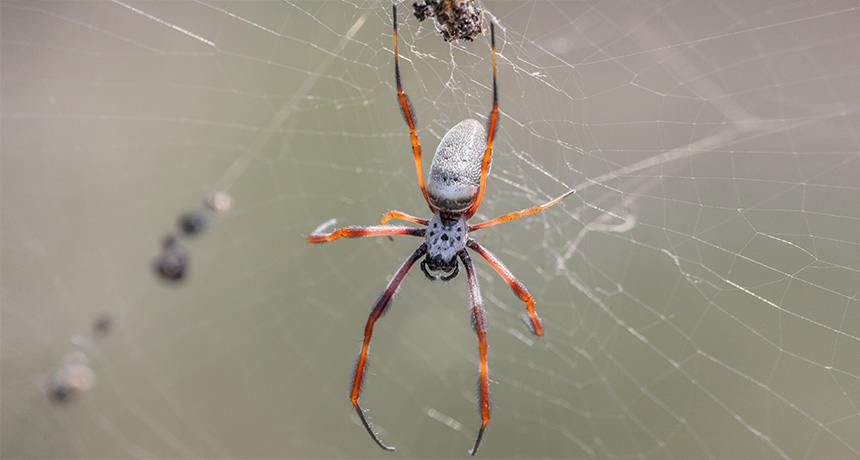How spiders mastered spin control
Their silk subtly changes shape as it twists, slowing rotation

STEADY SPIDER Silk from orb weaver spiders (Nephila edulis shown) deforms when twisted, enabling a steady dangle.
Sam Gordon/Flickr (CC BY-NC-SA 2.0)
Their silk subtly changes shape as it twists, slowing rotation

STEADY SPIDER Silk from orb weaver spiders (Nephila edulis shown) deforms when twisted, enabling a steady dangle.
Sam Gordon/Flickr (CC BY-NC-SA 2.0)